Why Does My Car Smell? Causes, Fixes, and Prevention Tips
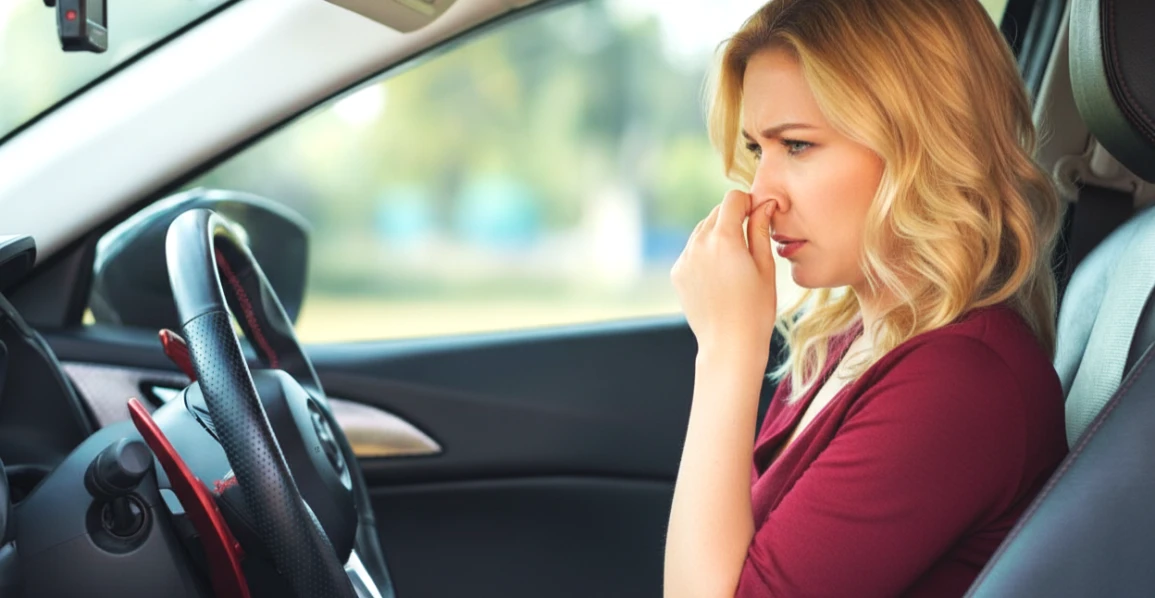
You open your car door, ready for a drive, but instead of cleanliness and freshness, you're met with a rather persistent odor in the cabin. Unfortunately, even the most meticulous car owners face this problem. Odors have a way of deeply penetrating the porous structures of seat upholstery, carpets, and headliners, lingering for a long time and creating discomfort.
The question of why does my car smell has many answers, which we will explore in this article. You should also be aware that persistent unpleasant odors can trigger headaches, aggravate allergies, and create a negative impression of both the car and its owner.
Diagnosing the Odor: What Your Car Is Trying to Tell You
Before taking any action, an accurate diagnosis is necessary. All odors in a car can be divided into two groups: everyday smells related to daily use, and technical smells that may indicate a serious malfunction requiring immediate attention. Everyday unpleasant odors are the most common and are directly related to the use of the vehicle.
Food and Drinks
Any organic liquid, be it milk, juice, or coffee, that soaks into the carpet or upholstery becomes an ideal breeding ground for millions of bacteria. It is the byproducts of their life cycle that create a rotten, sour, or rancid smell. Food scraps forgotten under a seat will eventually decompose, filling the cabin with a foul odor.
Traces of Pets
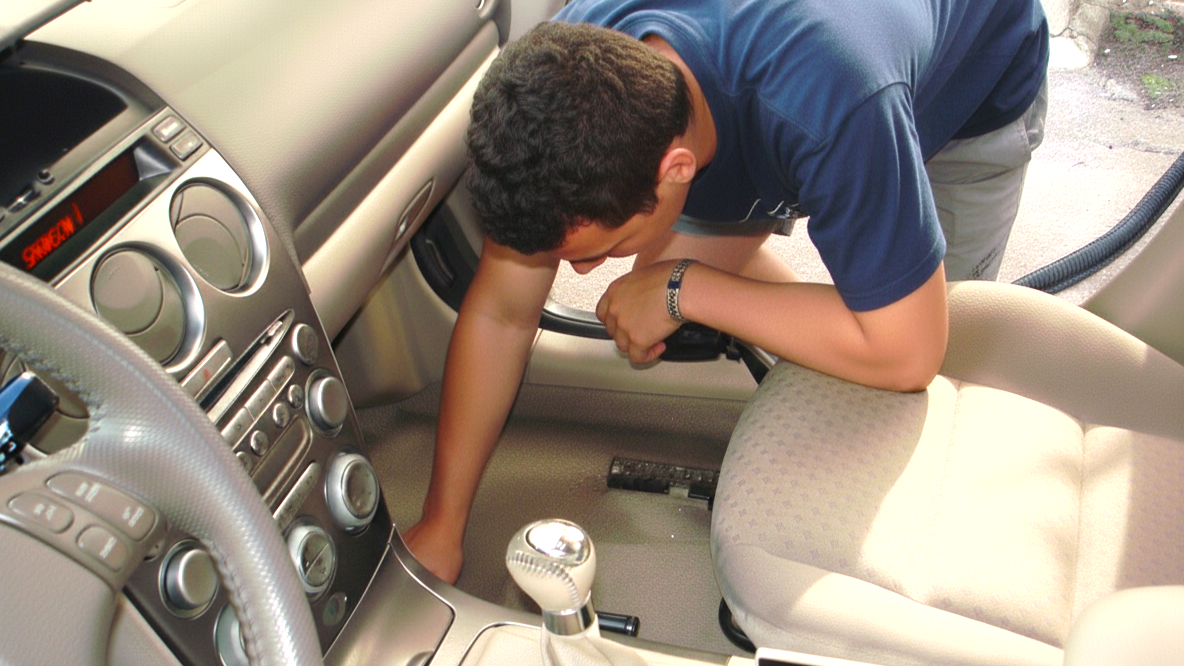
Fur, skin particles, dried saliva, and street dirt brought in on paws settle on all surfaces. In warm and humid weather, this organic cocktail begins to emit a characteristic animal smell.
Mold and Dampness
One of the most difficult and dangerous sources of odor. Moisture can enter the cabin through worn-out door seals, clogged sunroof drain holes, or simply from wet shoes on a rainy day. When the flooring remains damp, it turns into an incubator for mold and mildew, which generate a heavy musty smell in car. Breathing in mold spores is extremely harmful to your health.
Tobacco Smoke
The products of tobacco combustion contain tars and carcinogens that deeply penetrate the structure of fabric and plastic and settle in the ventilation system for a long time. This smell is nearly impossible to mask and requires a comprehensive, step-by-step cleaning process.
Some odors are direct indicators of a technical malfunction. Ignoring these signals can lead to costly repairs or even a hazardous situation.
Odor | Likely Cause of the Fault | Recommended Actions |
Burning Rubber | A slipping drive belt, overheating brake pads, or melting wire insulation due to a short circuit. | Stop immediately in a safe place and turn off the engine. Inspect the engine bay for smoke. If the cause is not obvious, contact a service center. |
Sweet, Cloying | Antifreeze (coolant) leak. The ethylene glycol vapors it contains are toxic. | Check the coolant level in the expansion tank. Proceed to a service center immediately, avoiding high engine loads. |
Burnt Oil | Engine or transmission oil leaking onto hot engine parts, most often the exhaust manifold. | Check the oil level with the dipstick. Contact a service center to diagnose and fix the leak. |
Gasoline | A leak in the fuel system: cracked fuel lines, worn injector seals, or a faulty fuel pump. EXTREMELY HIGH FIRE HAZARD! | Turn off the engine immediately. Do not attempt to start it. Call a tow truck to transport the vehicle to a service center. |
Rotten Eggs (Sulfur) | A faulty catalytic converter. Unburned fuel particles enter the converter, causing a chemical reaction that releases sulfur. | Visit a workshop to diagnose the exhaust system. Driving with a faulty converter is harmful to the environment. |
If you're asking yourself, why does my car smell like burning rubber, don't hope the problem will disappear on its own. Timely diagnosis will save you money and ensure your safety.
Finding the Source: A Methodical Approach

Locating the epicenter of the odor is the key to its successful elimination.
Start with a Full Cabin Inspection
Remove all foreign objects from the interior. Thoroughly inspect the door pockets, glove box, and center console storage compartments. Look under the seats with a flashlight. Check the trunk, paying special attention to the spare tire well, as condensation or water often collects there.
Conduct a Smell Test
Sit in the car and close all doors and windows tightly. After a few minutes, start sniffing to determine which area has the most concentrated odor.
Check the Climate Control System
Start the engine. Sequentially turn on the different modes: first, just the fan at full speed, then the air conditioner on maximum cooling, and finally, the heater. If the smell intensifies sharply when any of these modes are activated, the source of the problem lies within the ventilation system.
A Step-by-Step Strategy for Eliminating Odors
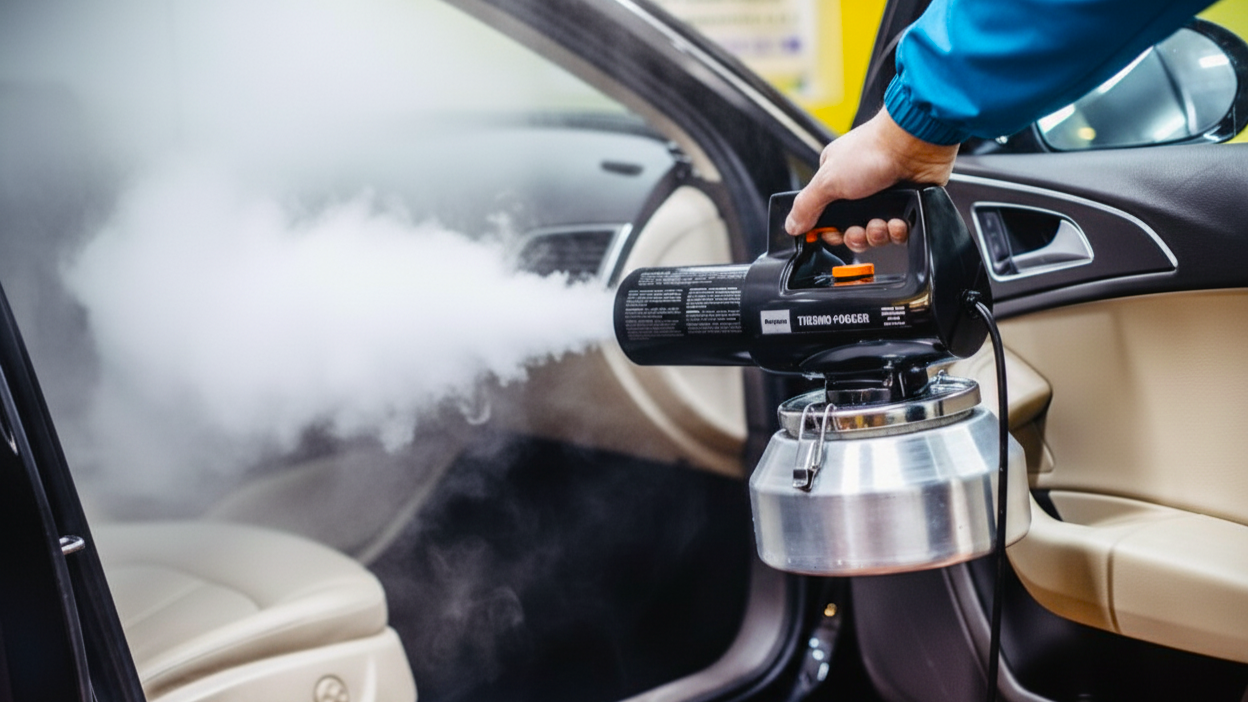
Once the source is identified, you can proceed with its complete elimination. Using air fresheners without prior cleaning will only mix the smells, creating an even more unpleasant "cocktail."
This is the foundational stage that sets the groundwork for further action.
- Thorough Dry Cleaning. Arm yourself with a powerful vacuum cleaner and a set of attachments (crevice tool, stiff brush). Vacuum every inch of the cabin: the floor, both sides of the mats, the seats (especially in the seams and joints), the headliner, and the trunk.
- Professional Wet Cleaning. Wipe down all plastic, vinyl, and leather elements with special, pH-neutral cleaners. Foam cleaners are ideal for fabric upholstery. Spray the product, work it in with a brush to create a foam, and after 5-10 minutes, remove the residue with a clean microfiber cloth or a wet/dry vacuum.
If you've figured out why does my car ac smell bad, it's time to tackle the colonies of bacteria and mold on the evaporator. Here's what you need to do:
- Replace the Cabin Air Filter. A clogged filter not only fails to clean the air properly but also becomes a source of dust and stale odors itself.
- Perform an Antibacterial Treatment. Purchase a specialized air conditioner cleaner. The most effective are foam products with a long probe that is inserted directly into the drain tube or air vents. Aerosol "bombs" that are set off inside the cabin to circulate through the system on recirculation mode are also popular.
- Preventatively Dry the Evaporator. Develop a useful habit: 5-7 minutes before finishing your trip, turn off the air conditioner (the A/C button) but leave the fan running. The airflow will dry the moist evaporator, depriving bacteria of a breeding ground.
After cleaning, odor molecules may still linger in porous materials. Absorbents are used to remove them.
- Baking Soda. A safe and effective absorber. Evenly sprinkle dry baking soda over the carpets and fabric seats. Leave it for 8-12 hours, then vacuum it up thoroughly.
- Vinegar. Excellent for neutralizing tobacco and damp smells. Place an open container of 9% white vinegar in the car overnight. In the morning, remove it and air out the vehicle well.
- Natural Absorbents. Activated charcoal, coffee beans, or silica gel placed in cloth bags under the seats will passively absorb moisture and odors.
- Enzyme Cleaners. The only true solution for removing odors of organic origin (milk, vomit, urine). Enzymes break down the protein compounds that cause the smell at a molecular level.
If your car smells musty even after all these procedures, it means moisture has penetrated deep into the soundproofing material under the carpet. In this case, partial disassembly of the interior may be required to completely dry the flooring.
Prevention: A System of Smart Habits
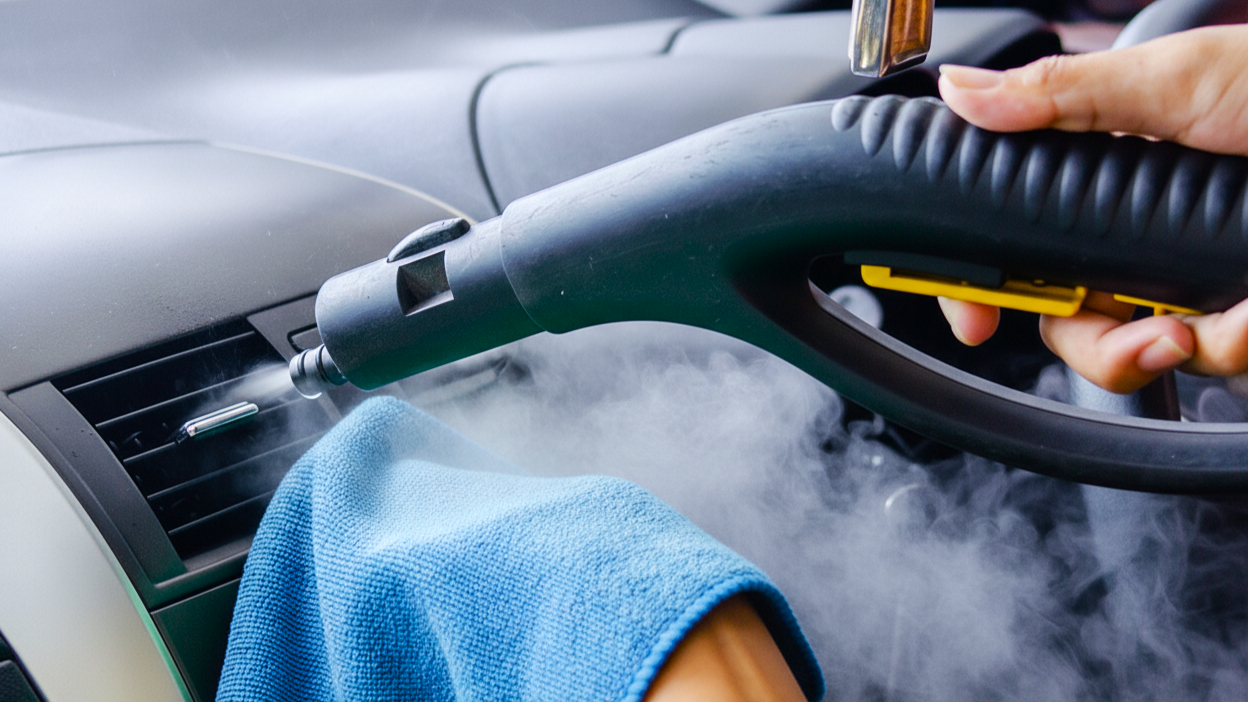
Keeping your car smelling fresh isn’t about masking odors — it’s about stopping them before they even start. The secret lies in a few smart habits that take only minutes a week but make a world of difference for your comfort (and your passengers’ impression).
1. Regular Cleaning — Your First Line of Defense
A car doesn’t have to sparkle to smell good, but a little routine goes a long way. Make it a habit to vacuum the cabin once a week — even a quick five-minute sweep removes dust, crumbs, and pet hair that can trap moisture and odors. Wipe down the dashboard and door panels with a mild cleaner or baby wipes to keep that “new car” freshness longer.
2. Choose the Right Floor Mats
Fabric mats might look cozy, but they’re also a magnet for mud and salt. Switch to rubber or polymer mats with deep grooves and raised edges — they’ll catch everything from slush to spilled coffee, keeping the carpet underneath dry and odor-free. Plus, they’re easy to rinse off in seconds.
3. Act Fast When Spills Happen
Life happens — a sudden brake, a sharp turn, and your latte becomes an air-freshener disaster. Don’t wait for it to dry and stain: blot it immediately with paper towels or napkins. If possible, spray the area with a car-safe upholstery cleaner to stop bacteria from forming (the real source of that “old milk” smell).
4. Let Fresh Air In
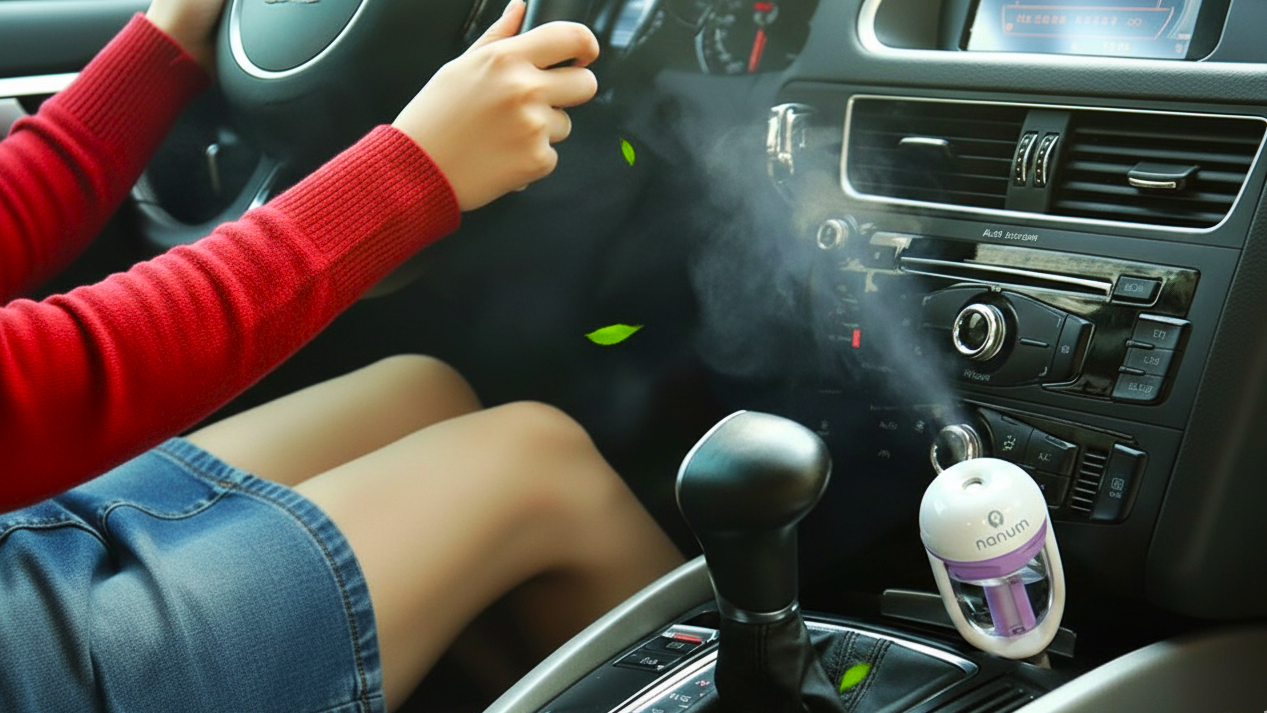
Cars need to breathe too. Whenever the weather’s dry, open the doors or windows for 15–20 minutes — especially after long drives or if your car’s been parked in the sun. This simple step helps air circulate, removes excess humidity, and prevents musty smells before they settle in.
Emergency Measures: Quick Masking
If you don't have time for a full cleaning but need to freshen up the cabin quickly, use temporary solutions. Place small cloth bags of freshly ground coffee or activated charcoal in several places. They are good at absorbing odors. A few drops of citrus or peppermint essential oil on a cotton pad can also help temporarily mask the problem.
Conclusion
Maintaining freshness and cleanliness in your car is the result of a systematic approach and attention to detail. Regular prevention, a quick response to any spills, and correct diagnosis of technical odors form the basis of a comfortable and healthy microclimate.
By eliminating a musty smell in the car and other unpleasant aromas, you not only make driving more enjoyable but also show care for your health and the well-being of your passengers. A clean, odor-free cabin is an essential attribute of a well-maintained and cherished vehicle.


